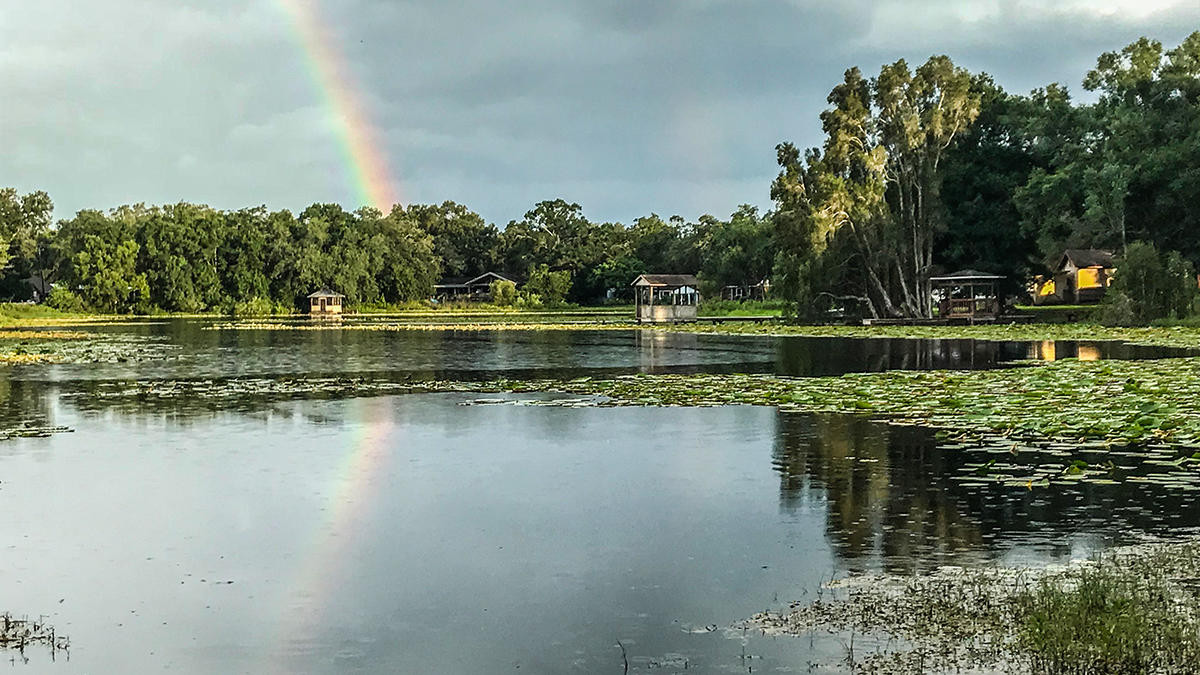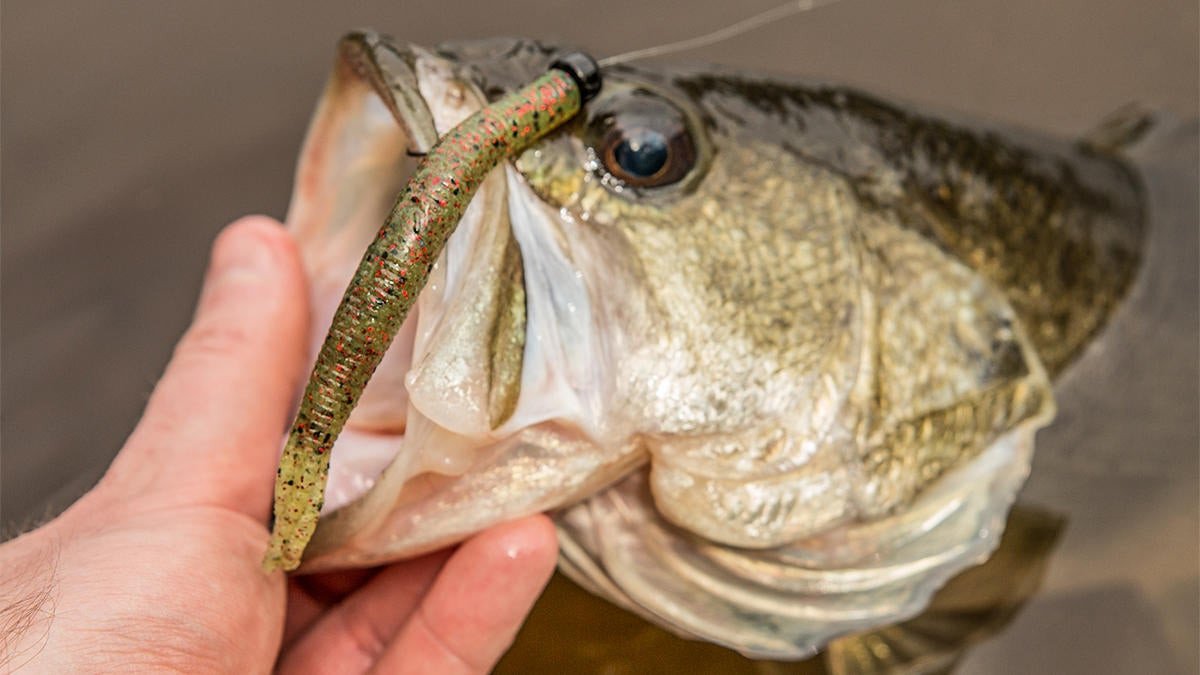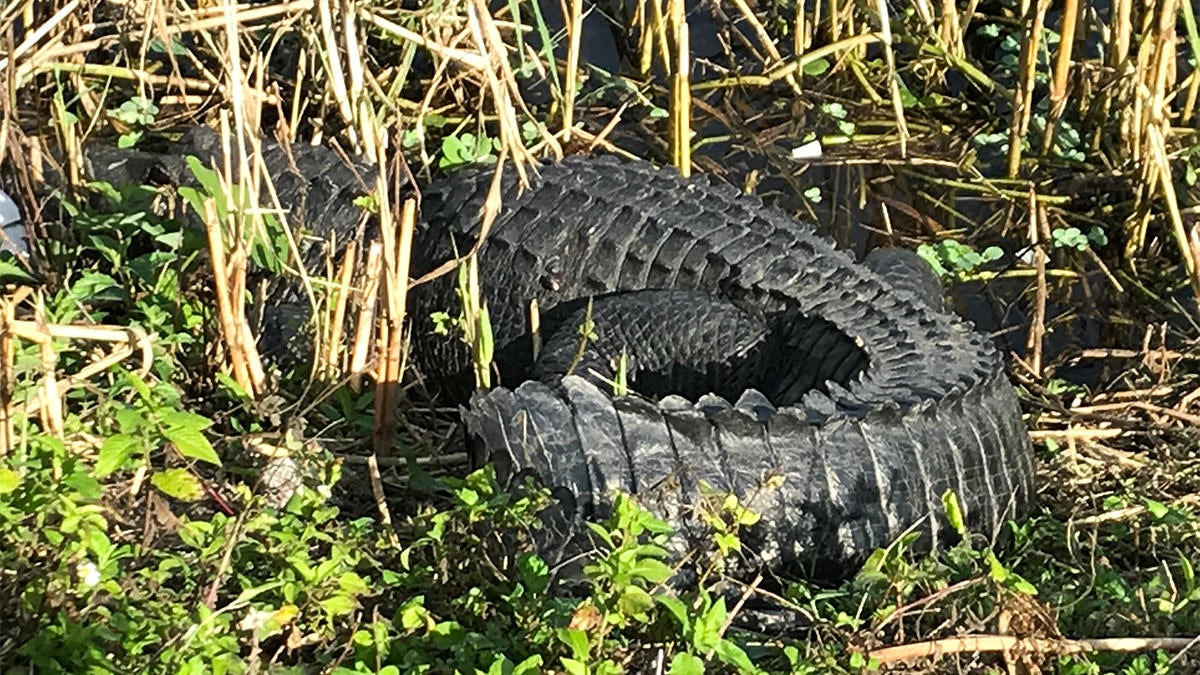Warning: Undefined variable $k in /home/nginx/domains/wired2fishcom.bigscoots-staging.com/public/wp-content/themes/understrap-child-0.6.0/functions.php on line 984
Warning: Undefined variable $k in /home/nginx/domains/wired2fishcom.bigscoots-staging.com/public/wp-content/themes/understrap-child-0.6.0/functions.php on line 987
Bank fishing offers several benefits — immediate access, no boat ramp mayhem and minimal startup cost. But don’t mistake this relaxed scenario with its minimal requirements for an easy stroll to instant success. Truth be told, the shoreline game presents a handful of challenges unique to fishing on foot.
For starters, realize that standing on the shoreline puts you at a lower angle than anglers in a boat, so your retrieves automatically follow a flatter plane. Using topwater frogs as an example, this means more potential lily pad entanglement/notching.
The solution: Use a higher rod posture and more nose lift to bounce your frog through the thick spots and make good use of each little pool your bait encounters.

Long distance relationship
Bank anglers may, at times, have to cast across vegetation to reach a sweet spot, or hit the fish they’ve spotted busting bait or swirling in chase. This always sounds like a good idea, until you actually hook a fish separated by a mini jungle of dense vegetation.
Case in point: I hooked a 6 1/2-pounder when I saw it swirling on the opposite side of a small lily pad field. The fish bit immediately and when it ran into the heavy cover, I kept my rod as high as possible without compromising control and leverage.
I reeled quickly when I felt the fish slip into small open areas and gained line – sometimes only inches – when I could. But when the fish got clogged in a dense spot, I could tell that continuing maximum pressure would not end well, so I ventured a risky bet that paid big dividends.
With the fish still tight, I opened my bail and released about 2 feet of line, while gradually raising my rod tip to prevent a sudden bubble of uncontrolled slack that I’d surely regret. Instead, I lowered the rod tip in measured form to gradually decrease the pressure in hopes that the fish would reverse out of the jam. Fortunately, that’s exactly what happened and I was able to guide the now tired fish around the jam and through an adjacent gap. Once I got her into open water, it was a done deal.

Bring it home
Landing big fish on a lakeshore can be tricky. I’ll generally “shore flip” the little ones and even a decent-size fish hooked solidly on a Texas-rigged bait. I do not like to see air below fish that bite anything with a treble hook and the real toads I occasionally see will always get the slide treatment – get them coming shoreward and about two feet out, I’ll sidearm my rod and slide them onto wet grass, or at least into reach on a muddy bank.

Danger close
Wherever I fish in Florida and many other southern waters, I’m always mindful of the potential hazards. From fire ants massing amid debris, to cottonmouth water moccasins slithering amid the vegetation and suspended in overhanging tree limbs, to alligators hiding just about anywhere, I don’t let potential threats dissuade me from fishing; but I definitely maintain a high level of awareness.
Snakes: Usually hear/feel you coming, but smacking/poking high grass with your rod tip or a walking stick helps prevent unexpected meetings. Similarly, check those trees before walking/wading beneath branches to reach a sweet spot. And if you’re keen on tiptoeing onto the trunk of a solid laydown to venture a cast into a submerged treetop, survey the deal carefully, lest you find yourself staring at hostile company while precariously perched in a vulnerable position.
Ants: Take particular caution during the rainy season when high water pushes insects farther up the shoreline and into temporary living arrangements. Suffice it to say that disturbing a pile of displaced ants won’t meet with a cordial response.
Consider, also, that displaced fire ant colonies have been known to form living rafts by interlocking all those legs and literally floating to their next high ground refuge. I’ve never waded into one of these biting flotillas, but I can’t imagine any upside to that deal.
Alligators: In truth, the small gators are more interested in catching my topwater frog, but dehooking one of these bandits can be a finger-risking exercise. Moreover, a larger gator might decide to help himself to my struggling catch and such close encounters can, at best, become perpetual YouTube fodder; and, at worst, an E.R. visit.
Example: Several of the roadside canals in South Florida and Venice, La. find windblown hyacinth mats jammed against the shoreline for an ideal punching scenario. I wouldn’t hesitate to send a heavily weighted creature bait into what would almost certainly be bass laden waters.
However, should a big one get tangled in the junk, you WILL NOT see David reaching into said mat. I want to catch every one that bites, but if I lose one, I lose one – that’s just God’s will. I’d rather lose a bass to the mat than lose a hand one of those cranky swamp dragons.












